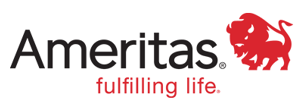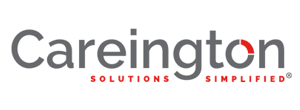Get the facts on Minnesota dental plans & save

In this article
While Minnesota is known as the Land of 10,000 lakes, the state has nearly 15,000 dental professionals in the form of dentists, dental hygienists, and dental assistants (according to the Minnesota Department of Health). If you're planning on using one and need insurance, this article will:
- Provide the cost trends in the state
- Review types of dental coverage available in Minnesota
- List the bestselling Minnesota dental plans provided through DentalInsurance.com




Minnesota Dental Cost
DentalInsurance.com reviewed 19 different dental plans offered through six separate insurance companies operating in Minnesota.
Average Premium
The average premium across the 19 options was $36.13 for individual coverage. The most inexpensive option was a dental discount program (Careington 500 Series Dental Savings) for $8.89 a month and the most costly among the plans examined was the Renaissance Max Choice Plus, at $64.58 a month.
Deductibles
The average annual deductible for a single enrollee was $69. One plan, The MetLife TakeAlong Dental High, had a $25 annual deductible and the Careington Discount Card had no deductible.
Family deductibles were higher than deductibles for a single enrollee, often tied to the number of people on the plan.
Maximum Benefit
A maximum benefit is the cap on how much an insurance company will pay for covered dental care within a year. The lowest maximum benefit for the 19 plans was $500 and the highest was $2,500. The average was $1,289 a year, with only the dental discount card lacking a maximum benefit restriction.
Types of Minnesota Dental Plans
With the exception of the Careington 500 Series Dental Savings plan, the rest of the dental plans reviewed were Preferred Provider Organizations (dental PPO). Dental PPOs are the most common type of dental plan in the United States. It tends toward wider networks and less restriction on the use of out-of-network dentists. Other types of dental coverage include Health Maintenance Organizations (dental HMO) and Dental Indemnity Plans.
Time to Save on Minnesota Dental Insurance
With your review of the Minnesota dental insurance market, you're better prepared to shop for dental insurance bargains. The following link will get dental insurance quotes for plans available in your region of Minnesota. You can also look below at the bestsellers to see what Minnesota plans have the highest sales on DentalInsurance.com.
A Reputation Built on Trust
See why our customers trust us to help them find the right dental planMissed Dental Insurance Deadline
I had been told I missed any possibility of getting Dental insurance because i missed the deadline sign up date.My daughter checked with her company's PR and was told I had to wait for a year. My teeth need cleaning as I am 88 yrs old and a tarter former. I was so diiscouraged and angry at myself.In desperation I goggled and searched hoping to find something.i happened to call Dentalinsurance.com and spoke to Carlyn. Within minutes she soothed my fears. She made it so clear that she would find the right plan for me. She cared about the cost wanting what was best for me. I felt a 40 # weight taken off my shoulders and have Dental insurance.Pat Kankowski
I had the good fortune of speaking with…
I had the good fortune of speaking with your representative twice and just wish I would have written down his name because he was one of the best reps I’ve ever spoken to. The last 20 years of my career I worked in sales, so I know a few things about customer service and I was impressed!Jan Shipstead

Oral health resources for Minnesotans
We've pulled together information to help you find resources in your state to help you maintain your oral health.
Minnesota Dental Association (MDA)
The Minnesota Dental Association has a membership of over 3,000 dentists and advocates within the state for legislation addressing scope of practice, oral health, and safety issues. Their website’s Public Resources sections includes guidance on choosing a dentist, access to dental care, oral health advice, and a code of conduct for dentists.
Minnesota Department of Health
The state’s Department of Health provides a free online resource regarding dental care programs, state data on oral health, and resources on state grants related to oral health.
Low Cost Dental Clinics in Minnesota
The Minnesota Dental Association publishes an online listing of free, or sliding fee scale, dental clinics.
University of Minnesota Dental Clinics
Comprehensive Care Dental Clinics offered through The University of Minnesota provide consumers with reduced cost dental care administered by dental students under the supervision of U of M faculty. Because these are teaching clinics which leverage dentists in training, fees are usually 30 percent lower than the average fees in the Twin Cities community. Adults as well as children are served by the clinics.



